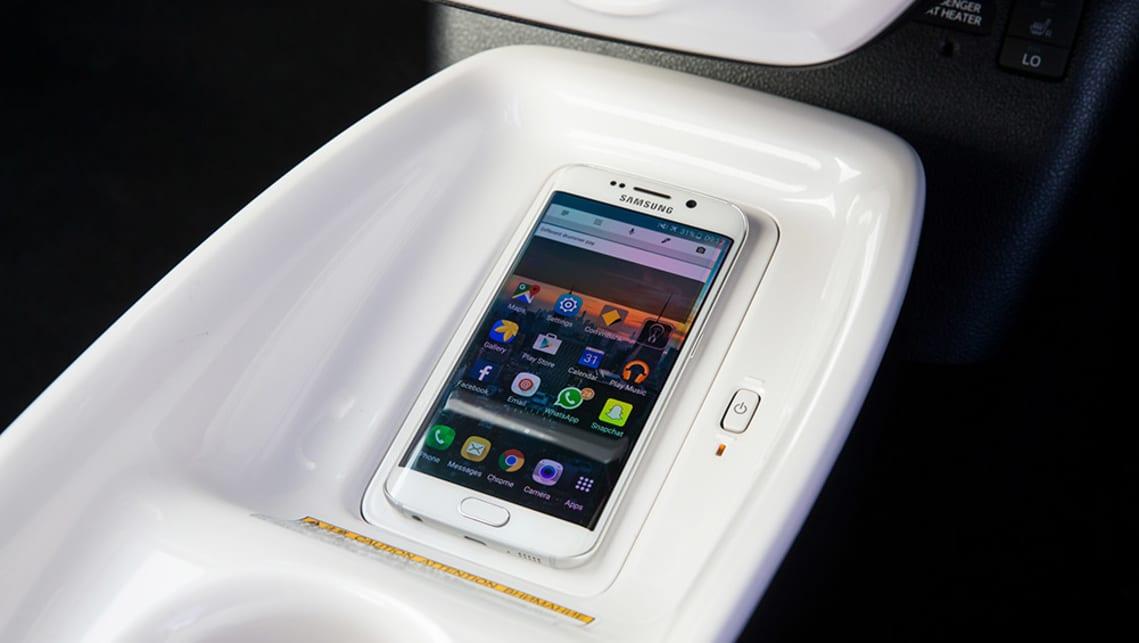
What is Qi or "chee" wireless phone charging?
Content

Qi could be the next big breakthrough in automotive technology.
The first thing you need to know is that it's pronounced "chee," which makes it sound more like a form of mildly medicinal Asian quackery rather than someone trying to charge you to watch a Stephen Fry quiz.
Qi seems to be a common term among those who study the ways of karate or acupuncture, but more modern widespread use will soon become a trademark for a form of wireless phone charging.
For now, that basically means a flat storage stand between the front seats of your new car, where you can charge your phone just by sitting there, without annoying cables.
Qi, or chee, stands for wireless charging, and it might be the next big thing.
Wireless charging, you say...
To get a little bit of technical knowledge, Qi wireless charging works on the theory of electromagnetic induction.
Essentially, when current flows through a circuit, it creates a magnetic field directed perpendicular to the current flow. So, if you run a cable across the floor of your house, it will direct the magnetic field towards the ceiling.
What gets interesting is that when you put a de-energized electrical circuit in a magnetic field, the field causes current to flow through the de-energized circuit.
So if you keep a energized circuit next to an unpowered circuit—very close so that the magnetic field doesn't dissipate—you can induce current without even connecting the circuits.
Great Scott! Charge up the DeLorean, it's Back to the Future XNUMX
Unfortunately, Qi doesn't have enough power to power flying cars because the wireless charging standard is limited to just five watts so far. Think tablets and phones, not machines driven by mad scientists.
More powerful Qi-branded options are emerging, and this is where things get exciting for home use. The 120-watt "mid-power" Qi standard means you can wirelessly power a computer monitor, laptop, or small stereo system. The "high power" specification can handle 1 kW, which is enough to power large appliances (presumably mechanical bulls).
Boffins is hard at work scaling the technology to handle heavy loads, but that's where the problem with wireless charging comes in.
The numbers vary, but it is generally accepted that Qi gives about 10 percent charging efficiency compared to a copper cable.
Most of this is wasted as thermal energy - or heat - and the higher the power transfer, the more energy is wasted.
If you're looking for a new phone and are interested in technology, check out the specs first.
However, if you own a Tesla, the US company is already accepting orders for an enlarged Qi pad on the floor of your parking space, allowing you to charge your Model S without cables.
As far as phone charging goes, for those who are a fan of the technology but don't want a Toyota Prius or Lexus, there are Qi standard chargers that run off USB and 12V ports in regular stock cars.
Fabulous! I'll get my iPhone...
Not so fast. For now, Apple World residents will need to buy a special adapter for their iPhones before using Qi charging because Apple devices don't come with the system built in (Apple doesn't work well with others).
This will no doubt cause endless complacency among Android and Windows Phone fans who have been using this technology in their phones for years.
Just because a standard has been set, don't expect everyone to accept it.
However, not every Android and Windows phone has wireless charging capability, so if you're looking for a new phone and are interested in this technology, check out the specs first.
Where will I see Qi charging first?
Technology-focused Virgin Airways has already deployed Qi hotspots at major international airports, and IKEA is already selling desks with built-in Qi charging points.
The Prius isn't the only Qi-equipped Toyota with wireless charging points that come standard on its prestige Lexus models. In Australia, it is only available in two Lexus SUVs, the NX and LX. Qi has also found its way into the American Camry and Avalon sedans and the Tacoma truck.
Other car makers such as Audi, BMW, Jeep and Kia are also starting to use Qi wireless charging despite Apple's decision to drop it from its phones.
Will there be other wireless chargers?
In a word, yes. Just because a standard has been set, don't expect everyone to accept it. Look at other format wars - Betamax vs. VHS or Blu-Ray vs. HD-DVD.
There are other brands with their own catchy names and standards, such as AirFuel, that use the same technology in similar and completely incompatible ways.
To get around this, some phone manufacturers such as Samsung have installed an AirFuel and Qi compatible charging system in their mobile devices.
Eventually, however, the ax will collapse and only one charging standard will remain (perhaps the one Apple invents). Until then, everything is centered around Qi.
Is wireless phone charging a must-have feature for your next car? Share your thoughts with us in the comments below.
